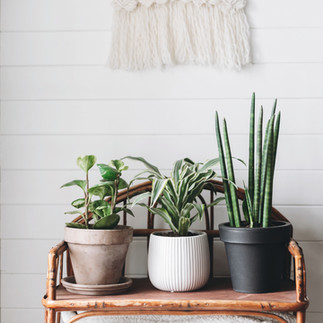
There is nothing sadder than a plant with drooping leaves and looking unwell. This post is to help you deal with this issue quickly and efficiently.
First, let's go over a little history. Where did you get it, when did you get it, when did it start looking this way and have there been any changes in the life of this plant?
Answering these four questions makes diagnosis easy.
If you bought your ailing plant recentlyfrom a returnable source, consider returning it.
If you bought your plant a while ago, it survived a short time but now it's sick, consider returning it. If too late or the seller won't accept it, go to troubleshooting plans.
If the plant has been in your care months, maybe years, consider looking for any changes you made in its environment , then go to troubleshooting.
The troubleshooting guide is exactly that. A guide. You know your plants and are in touch with them, so you have the last word on care.
This is just what I would do.
Troubleshooting for houseplants.
Plan A
Remove ailing plant away from your other plants.
Take the plant out of the pot. Inspect roots for insects, rot and root decay. Your plant needs happy roots.
Visible Insects:For houseplants, soak in Home Defense solution for ten minutes. Repot. Place on a water tray until soaked. Drain. Place in warm medium light. Don't water until soil is dry.
Plan B
Check the list of ailments available for your sick plant. Insects are fussy about which plants to invade. Molds affect rhizomes and underground roots.
"Picture this" is a website that helps with diagnostics and is easy to use. Download the app for free. Ignore the "sign-up" page by pressing the "go back" arrow. Point your camera at your plant take a picture then wait for the options to pop up, and choose the plant you have. Scroll down to "care" and etc. at the bottom. There it is: parasites, nematodes, and what to do. Press the screenshot on your android ,( usually the bottom two right-side buttons) to save to your pictures folder.
A big note of caution on Chemicals
The FDA studies data on harmful effects of pesticides and herbicides and fungicides.
They are interested in preventing users from the harmful effects and probably do a good job for humans.
For pollinators like wasps and bees,and the whole lepidoptra family, the situation is dire.
Plant chemical products dealing with plant pests and diseases completely ignore well-documented data on the harm chemicals can do to important insects dominating growth of plant fruits in the food chain.
The summary of several best sellers will post soon.
Without bee colonies, we would have no food. The big growers are managing this kill-off by importing and sharing hundreds of hives for the pollinating season. This would be unnecessary if they simply gave their crops alternatives to the sprays now widely used.
Bees would thrive around food crops If allowed to live.
It's unfortunately a simple question of finances. Big companies ignore the long-term effects of killing the pollinators because short-term yields are the only things of interest to share-holders. Chemical company lobbyists are paid handsomely for their work. The bee lobby is small and ineffective at drawing public attention to this catastrophic environmental issue.
You can do your bit by taking a look at the table below. Choose your chemicals wisely, and study what arsenal of chemicals you think it is ethically wise for a future with pollinators. Maybe get a hive or two of your own.






コメント